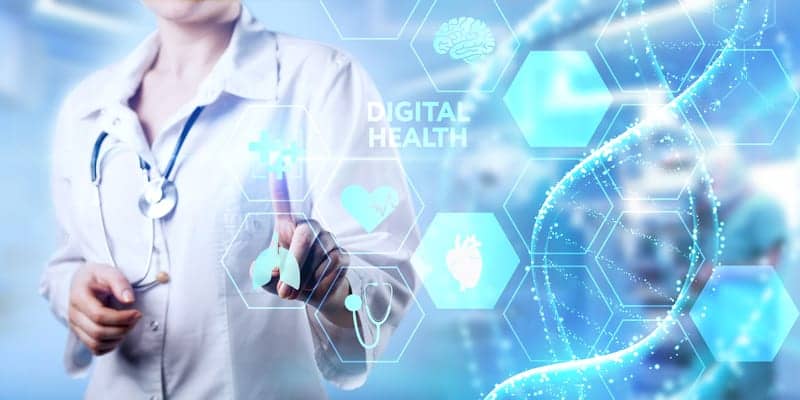By Jim McCoy
The integration of digital technologies and medical devices is rapidly changing healthcare delivery. Innovations are empowering clinicians and patients to be more knowledgeable and efficient in delivering and pursuing care. However, new technologies have added complexity to healthcare environments with additional cybersecurity risks and a greater inventory burden for healthcare technology management (HTM) teams. The challenge is that medical device management often remains siloed from other stakeholders within health systems.
Adapting to the proliferation of network-connected digital technology requires a clinical asset management strategy that breaks down those silos and encompasses clinical engineering, capital planning, and IT. This strategy will allow health systems to confidently meet patient demand and keep up with the standard of care while protecting their patients, infrastructure, and financial health.
Managing Financial Pressures
Advancing technology has brought about escalating acquisition costs and a higher cost of ownership, significantly affecting health systems, particularly considering the current financial strain on healthcare organizations on healthcare organizations. With many hospitals at near-zero or negative margins, costly shifts in the standards of care can be an unnerving trend. Approaching equipment inventories as assets for delivering value for both patient outcomes and operational productivity, as opposed to only cost centers, can reveal a more sustainable path forward.
Moreover, adopting a return on investment, or ROI, model can help establish a more viable strategy for determining equipment purchases. By considering the ROI, stakeholders can make more informed decisions that enable them to deliver quality patient care while safeguarding their bottom lines.
Cutting-Edge Technology Enters the Clinical Space
Many of the latest technological advancements that are revolutionizing industries are also integrating into a variety of care pathways. There are many potential benefits that health systems need to weigh against the uncertainty of new tools and technologies that have not been extensively tested.
- Artificial intelligence (AI) and machine learning are changing the way medical technology is used. Data analytics can help drive a greater understanding of equipment utilization, which informs purchasing and resource allocation decisions. Furthermore, this information can ensure that the right equipment is in the right place at the right time, improving patient care and outcomes.
- Predictive algorithms are increasing efficiency and responsiveness to needs within health systems. Emergency departments can plan better for patient volumes, which leads to more efficient operations and better patient satisfaction. Plus, clinical engineering departments can anticipate potential failures to reduce downtime and limit service disruptions for medical equipment.
- High-risk classes of equipment, such as surgical robots, can operate more consistently with less direct involvement from clinicians. Automated processes can reduce errors and improve outcomes while also reducing the risk of malpractice claims. Although these machines are costly, they can lead to significant savings in the long term.
The Evolving Roles of HTM Teams
Historically, IT departments have taken responsibility for digital technology components used throughout health systems. This includes technology assets integrated with medical equipment, such as tablets in use with imaging equipment. Clinical engineering teams typically have focused on the mechanical components traditionally considered to be directly involved in administering treatment or diagnostics. This split has led to inefficiencies as these two classes of technology have become more closely linked. For instance, clinical staff may not adequately express the equipment’s desired usage and maintenance, leading IT to implement unnecessary safeguards.
The separation of clinical engineering and IT presents a significant challenge for health systems today. IT departments are not typically as close to the point of care as clinical engineering teams are, and therefore IT cannot manage medical devices as closely as they should. Considering this challenge, clinical engineering should take a more active role in managing these devices. To better reflect the technology trends these teams are dealing with, many health systems have been reorganizing IT and clinical engineering to function more closely.
To ensure that devices are optimally maintained, and patient care is optimized, IT and clinical engineering departments will have a strong mandate to work collaboratively and cohesively. As devices become more advanced, and the workload on healthcare professionals increases, there is an urgent need to optimize the use of technological systems. As we continually evolve healthcare, it’s imperative to recognize the critical role of IT and clinical engineering in device adoption and management.
New Security Concerns for the Digital Age
Digital medical device technology is advancing faster than regulatory guidelines that govern healthcare. Regardless of the benefits of any technological advancement, health systems are under a mandate to protect the physical safety and privacy of their patients. The new frontier of this effort is cybersecurity.
Many digital technologies in healthcare, such as tablets, use network connectivity. The amount of network-connected medical devices is growing well into the millions. This rapid growth increases the potential attack surface area for health systems. Digitalization has increased the risk and frequency of cyberattacks in healthcare to unprecedented levels. Attackers often exploit flaws in medical devices or software—sometimes with dire consequences, as seen in hospital ransomware attacks.
Some shift in risk is inevitable with evolving technology standards. But health systems can mitigate risk by strengthening their efforts to keep an accurate equipment inventory and diligently monitoring network-connected and network-capable devices. Further, cybersecurity risk management needs to address the entire lifecycle of network-connected devices, from design to disposal.
Health systems should be aware that modern technology devices have different cybersecurity considerations and demands than traditional medical devices. Modern technology devices have more functionality than traditional medical devices and provide different interfaces that can potentially interact with other medical components. This includes what types of vulnerabilities devices may carry and how manufacturers handle important updates like software versions and patches.
The dynamic nature of digital technology in healthcare inherently carries more risk because it’s continuously connected to the internet. The pathway to mitigate this risk is not always clear, either. Many devices rely on patches validated by vendors as new vulnerabilities are uncovered. Yet as equipment ages, these crucial updates may no longer be provided. HTM teams need to assess how additional compensating controls can be deployed to minimize risk and disruption to clinical operations. Tactics such as operating a network-capable device without connecting to a network can help to sustain the useful life of equipment without ignoring the potential risks to patients and facilities.
/The complex risks and benefits of network-enabled technology require health systems to strike a careful balance between innovation and managing risk. Health systems need clear policies and guidelines on network security, risk management, awareness and communication, and training programs.
The urgent need for diligence in healthcare cybersecurity is a prime example of why all stakeholders in medical equipment management, including IT and clinical engineering teams, must treat these technologies as a collaborative responsibility. Ultimately, health systems can take a proactive approach to cybersecurity management to ensure they maintain high-quality patient care and protect crucial data from unauthorized access or malicious attacks.
Whether or not to adopt digital medical device technology is largely a foregone conclusion for health systems. These advancements are rapidly becoming the standard of care in many modalities. The priority for health systems is finding a way to leverage these technologies to advance the quality of patient care, and simultaneously build efficient clinical operations, patient safety, and organizational stability.
To optimize goal achievement, it’s crucial to have the appropriate strategy and teams in place to effectively manage digital medical equipment technology. Health systems need to identify and employ suitable strategies to ensure the successful implementation and maintenance of digital medical equipment technology. This calls for staff training, efficient management, and innovative solutions that promote reliability and effectiveness. Through this, health systems can build an efficient, cost-effective equipment fleet while placing patient safety at the forefront of their operations.
Jim McCoy is president of clinical asset management at TRIMEDX. Questions and comments can be directed to 24×7 chief editor Keri Forsythe-Stephens at [email protected].





